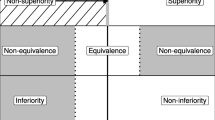Abstract
We compare five closed tests for strong control of family-wide type 1 error while making all pairwise comparisons of means in clinical trials with multiple arms such as the SCORE Study. We simulated outcomes of the SCORE Study under its design hypotheses, and used P values from chi-squared tests to compare performance of a pairwise closed test described below to Bonferroni and Hochberg adjusted P values. Pairwise closed testing was more powerful than Hochberg’s method by several definitions of multiple-test power. Simulations over a wider parameter space, and considering other closed methods, confirmed this superiority for P values based on normal, logistic, and Poisson distributions. The power benefit of pairwise closed testing begins to disappear with five or more arms and with unbalanced designs. For trials with four or fewer arms and balanced designs, investigators should consider using pairwise closed testing in preference to Shaffer’s, Hommel’s, and Hochberg’s approaches when making all pairwise comparisons of means. If not all P values from the closed family are available, Shaffer’s method is a good choice.
Similar content being viewed by others
References
Hochberg Y. A sharper Bonferroni procedure for multiple tests of significance. Biometrika. 1988; 75:800–802.
Sidak Z. Rectangular confidence regions for the means of multivariate normal distributions. J Am Stat Assoc. 1967;62:626–633.
Fisher RA. Combining independent tests of significance. Am Stat. 1948;2(S):30.
Holm S. A simple sequentially rejective multiple test procedure. Scand J Stat 1979;6:65–70.
Simes RJ. An improved Bonferroni procedure for multiple tests of significance. Biometrika. 1986; 73:751 –754.
Hommel G. A comparison of two modified Bon-fcrroni procedures. Biometrika. 1988;75:383–386.
Rom DM. A sequentially rejective test procedure based on a modified Bonferroni inequality, Biometrika. 1990;77:663–665.
Westfall PH, Tobias RD. Multiple testing of general contrasts: truncated closure and the extended Shaffer-Royen method. J Am Stat Assoc. 2007; 102:487–494.
Westfall PH. Young SS. Resampling-Based Multiple Testing. New York: Wiley: 1993.
Scheffe H. A method for judging all contrasts in the analysis of variance. Biometrika. 1953;40:87– 104.
Tukey JW. The problem of multiple comparisons. In: Braun HI, ed. The Collected Works of John W. Tukey: Multiple Comparisons, vol. 8. New York: Chapman and Hall: 1994.
Kramer CY. Extension of the multiple range test to group means with unequal numbers of replications. Biometrics. 1956;12:307–310.
Grechanovsky E, Hochberg Y. Closed procedures are better and often admit a shortcut. J Stat Plan Infer. 1999;76:79–91.
Shaffer JP. Modified sequentially rejective multiple test procedures. J Am Stat Assoc. 1986;81:826– 831.
Hornmel G. A stagewise rejective multiple test procedure based on a modified Bonferroni test. Biometrika. 1988;75:383–386.
Marcus R, Peritz E, Gabriel KR. On closed testing procedures with special reference to ordered analysis of variance. Biometrika. 1976;63:655– 660.
Wright SP. Adjusted P-values for simultaneous inference. Biometrics. 1992;48:1005–1013.
Donoghue JR. Implementing Shaffer’s multiple comparison procedure for a large number of groups. Recent Developments in Multiple Comparison Procedures. Institute of Mathematical Studies, Lecture Notes—Monograph Series. 2004;47:1– 23.
Holland BS, Copenhaver MDP. An improved sequentially rejective Bonferroni test procedure. Biometrics, 1987;43:417–423.
Westfall PH. Multiple testing of general constraints using logical constraints and correlations. J Am Stat Assoc. 1997;92:299–306.
Sloane NJA. The On-Line Encyclopedia of Integer Sequences. 2007. www.research.att.com/~njas/sequences/.
Bittman RM, Romano JP, Vallarino C, Wolf M. Optimal testing of multiple hypotheses with common effect direction. Biometrika. 2009;96:399– 410
The SCORE Study. Manual of Policies and Procedures. Version 4.0. Bethesda, MD: National Eye Institute; 2008. National Technical Information Service: Product Code #PB2008–106870.
Author information
Authors and Affiliations
Corresponding author
Rights and permissions
About this article
Cite this article
Oden, N., Van Veldhuisen, P.C., Scott, I.U. et al. SCORE Study Report 8: Closed Tests for All Pairwise Comparisons of Means. Ther Innov Regul Sci 44, 405–420 (2010). https://doi.org/10.1177/009286151004400405
Published:
Issue Date:
DOI: https://doi.org/10.1177/009286151004400405



